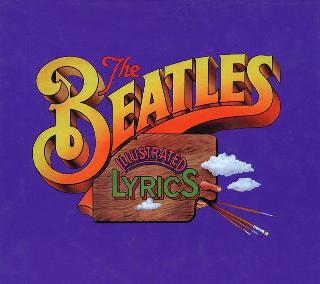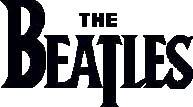Index
Home
Vorige
She Loves You
Composer(s) : Lennon and McCartney
Year : 1963
Chords/Tabs: She Loves You
Notes On "She Loves You" (SLY)
Copyright 1989 Alan W. Pollack
All Rights Reserved
As an early work, there are a number of significant ways in which "She Loves
You" is *not* particularly adventurous; shades of "let's not pull any strokes
or do anything I'll be sorry for."
In particular:
- the form is a rather straightforward intro-verse-verse-refrain-verse-
refrain-coda.
- the phrasing throughout is totally four-square; the verse is is four times
four, and the refrain is a true middle eight.
- the harmonic rhythm is fairly regular throughout with no extremes.
- the harmonic scheme, in spite of a few localized touches of color, is
rather static; the song is firmly in G throughout.
And yet, the song contains a musical vocabulary and arrangement which is
shot through with details and nuances that were soon to develop into
trademarks; the special "sound" is already apparent.
Rather than try for anything comprehensive this time let's simply examine
some of the highlights, roughly in order of their appearance.
Intro
- To borrow a phrase from ancient Greek drama, the song begins "in medias res."
We get a little drum roll and the intro starts off as though the song were
already in progress. The fact that the intro is actually nothing other than
a variation on (an anticipation of ?) the refrain is what creates this effect.
- The feeling of having started in the midst of the action is heightened by the
opening chord progression. We're not "in" G as much as we are heading toward
it:
e ->A7 ->C ->G (with added 6th!)
G: vi V-of-V IV I
The use of the V-of-V moving to the IV (with the inevitable cross relation)
is an early example of what we hear in EDAW. The opening chord progression
which doesn't start on I and takes four somewhat disorienting chords to
finally get there shows up again in "Help!".
- And what about that added-sixth chord, eh ? According to Lewisohn, George
Martin tried to talk them out of it saying it sounded too much like the
Andrews Sisters. Clearly, it's a sound more typical of 40's pop music
rather than the 60's but it certainly seems to fit here. Part of what
helps make it work is the repeated melodic motive ("yeah, yeah, yeah")
ending on the note E; on a more subliminal level that added sixth chord
creates a superimposition of the opening vi chord on top of the I.
On a theoretical basis, that added sixth is called a "free" (in the sense
of gratuitous, or non-functional) dissonance. In most tonal music until
the twentieth century, any note appearing in a chord that was not part
of the chord's root triad was considered a dissonance. As such, it was
expected to be well behaved by "resolving", typically stepwise downward,
to a note that *is* part of the triad either during the current chord or
on the very next chord. The most classic example of this is the way in
which the "7" of the V7 chord resolves to the "3" of the I chord:
F ->E
D ->C
B ->G
G ->C
C: V I
By the end of the 19th century, this strict treatment of dissonance
broke down even within the so-called classical domain though not without
many raised eyebrows; the free 9 and 11 chords of Debussy for example
were quite the talk of music theory classes 80 years ago.
In SLY, that E sitting on top of the G triad serves no structural musical
purpose other than to give sensuous delight. Think of it as a spice as
opposed to a nutrient.
Verse
- there's another striking free dissonance near the beginning of the
verse: the e7 chord formed by the D in the voice part (i.e., it's
at the top of the rising scale on the word "love"). In a more
straightlaced context, that D would want to get resolved to a
C on the next chord. This e7 here is not such a big deal per se,
except in consideration of the period and genre in which it appears.
- there's a heavy syncopation that just about pulls us out of our seats
at the beginning of the third line of the verse. It comes right after
"She said she loves you" and it occurs on the the off beat between
the 3rd and 4th beat of the measure; try this -- tap straight 4 with
one hand and sneak in a hard whack between 3 and 4 with your other --
you'll see what I mean about falling out of your seat.
The fact that this sort of syncopation is used so sparingly within
this song makes this instance the more powerful. Indeed, there are
two additional reasons for the powerful effect here yet again teaching
us how "less is more":
1. the same syncopation is *not* repeated in the next phrase where
(rote) symmetry would have argued for it; play it out in
your head -- it's very reasonably symmetrical but overall,
it vitiates the power of the first one.
2. the chord for our syncopation is G but the choice for the low note
in the bass is B, putting the chord in it's first inversion which
carries less weight than the root position. Again, play it out
in your head -- the note G in the bass makes for a harder blow,
but it's almost too hard and a little difficult to bounce off of;
like stamping hard into mud.
- In the second half of the phrase which contains the syncopation we
have the lead guitar fill in a space with an anticipation of the "yeah,
yeah, yeah" motive of the refrain. It's always been there so you take
it for granted but step back and think of the song as a whole; what
a unifying impact the use of this motive has on it!
- Then of course there's that c-minor chord which begins the fourth
phrase and seems to get people in quite a stir. It's actually not
that far out a chord; none other than the iv chord borrowed from the
parallel minor of G Major. Huh ?
Not to be confused with the concept of relative major/minor keys,
parallel Major/minor (PMM) keys are simply the Major and minor modes of
the same tonic root; e.g., G Major and g minor. PMM's posess a
paradoxical quality -- they have different key signatures (and hence a
slightly different set of chords) yet they don't really sound at all
like remote keys from each other because of the common tonic (I). Going
way back into the classical period, composers frequently have
borrowed chords from the parallel minor when in a major key for
effect. The particular favorites choices in this regard are the iv
and vi which contain the flattened 6th degree of the scale; that flat 6th
has a very strong melodic pull downward toward the 5th degree of the scale.
In spite of all of the scholarly verbiage used here, the minor iv
chord is quite a garden variety effect. Think of the line in "Home
on the Range" which goes "where seldom is heard a discouraging word";
a typical harmonization of this line puts the Major IV under the
word "discouraging" and then changes it to a minor iv for the word
"word." If you're in the key of G, you're moving in this example from C
Major to c minor and you can hear that E slide down to E flat in the
inner voice; you can even hear the E flat slide down to D in the next
line of the song. This sort of barbershop harmony is quite sentimental
in effect.
In SLY, the effect is more exotic than sentimental mainly because the
iv chord is jumped into instead of being set up as it more usually is
by the Major IV. But it's nothing to get hung about.
- Speaking of exotic inflections to the Major scale, don't overlook
that wonderful guitar lick which introduces each verse like a fanfare.
I believe that the lick contains at least F natural and A flat in it,
neither of which belongs in G; very piquant.
Refrain
- The verse ends on nice fat V chord which resolves "deceptively" to
the vi which starts the refrain. This provides some relief from
what otherwise (with the exception of the minor iv) is a very
straight harmonic scheme.
- the minor iv makes a second appearance in the refrain. This one sounds
even more exotic than the earlier one because of it's juxtaposition to
the A7 (V-of-V) chord.
The Vocal Parts
- Have you ever noticed the peculiar property of the voices of John
and Paul heard in close harmony ? Sometimes they sound like a third
voice which resembles neither of their own, and sometimes they
quite simply make vocal "sparks".
For some reason, the sparking variety seems to particularly show when they
sing open fifths. It's a wonder that they ever stumbled onto this. Open
fifths in most Western music sounds like an archaic allusion to Medieval
times; thirds and sixths being the typical means of harmonization.
Nonetheless, they went out of their way to sing open fifths and though
it's an incidental detail, it is also a tell tale signature of their early
sound. In SLY, there's a sparkling open fifth on every occurrence of
the word "bad" as in the phrase "and you know that can't be bad."
There's not much more your learned astronomer can say about this one;
the theoretician stands in awe of a natural phenomenon.
"Sie denkt, ja, nur an dich,
und du sollte zu ihr gehen."
Regards,
Alan (awp@mirror.tmc.com)
---
"They tried to fob you off on this musical charlatan,
but *I* gave him the test." 062889#5
Ook op Past Masters, Vols. 1:
Ook op 1962-1966:
Ook op On Air - Live At The BBC Vol 2:
Ook op 1:
(c) 2024 Serge Girard


 (c) Alan Aldrigde, The Beatles Illustrated Lyrics
(c) Alan Aldrigde, The Beatles Illustrated Lyrics